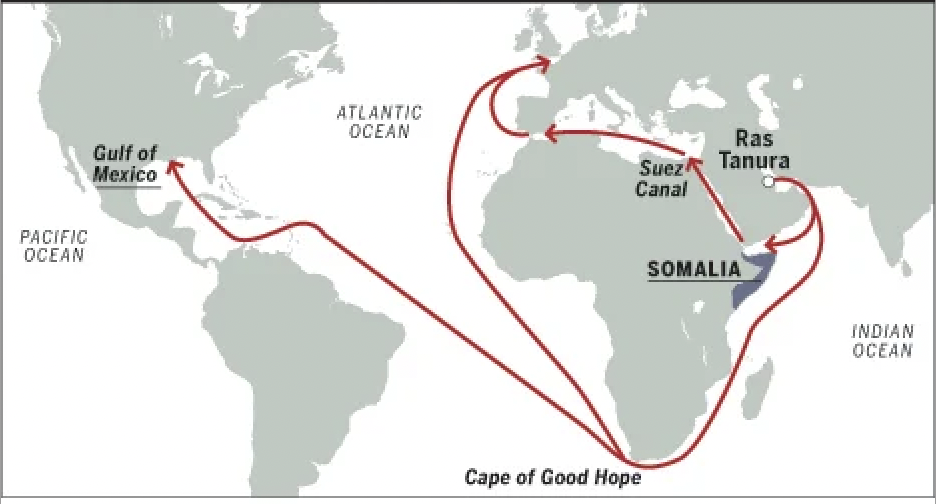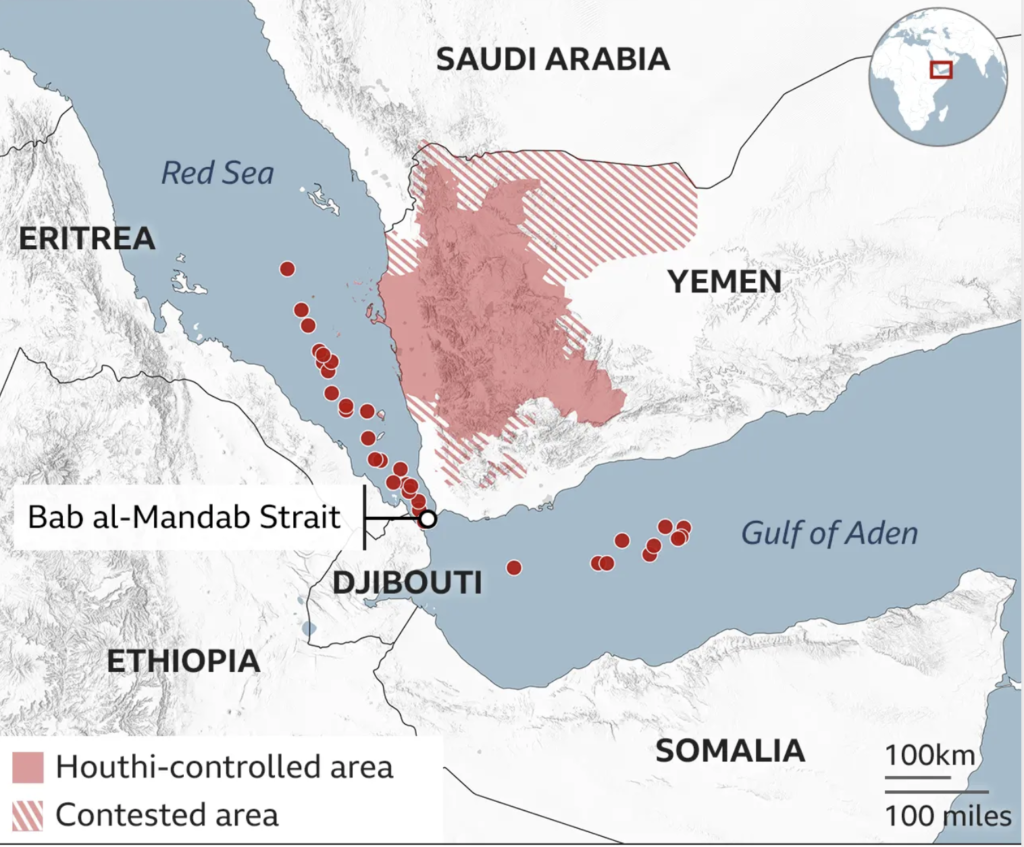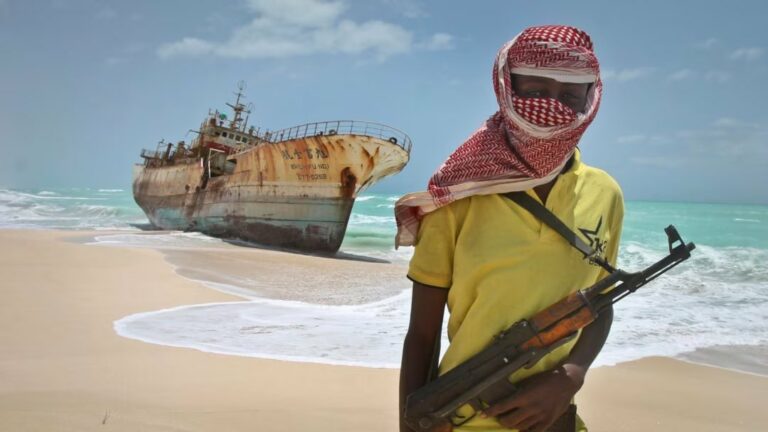By Andrea Tucci,
Piracy dates back 2000 years to ancient Greece when the Greeks faced challenges in commerce. During the Roman era, ships loaded with grain and dates in the Mediterranean were often attacked by pirates. Piracy remained widespread in the Middle Ages and subsequently thrived between 1620 and 1720, becoming the golden age for pirates who profited greatly from these activities. Over time, the governments of European powers began to encourage these attacks on ships and the collection of valuable goods.
The main hotspots of contemporary piracy include the Gulf of Aden, now associated with the Houthi rebels in Yemen and the notorious Somali pirates; Southeast Asia; the Gulf of Mexico; and the Gulf of Guinea, which has recorded the majority of maritime kidnappings globally.

The motivations behind contemporary piracy reflect the same socioeconomic issues that have driven men to piracy for centuries. Pirates often come from the lower echelons of society, offering opportunities to those who otherwise have no path to advancement. It serves as a form of escape and redemption. Often, pirates take passengers hostage and demand large sums of money for their release. The Strait of Malacca, located between the Malay Peninsula and Sumatra, has historically recorded significant levels of piracy due to its strategic position and heavy maritime traffic. However, in recent decades, regional efforts and international cooperation, such as joint patrols and bilateral agreements, have helped reduce the incidence of piracy in this area.
Numerous and indiscriminate attacks by the Houthis on commercial and oil ships in the Bab el Mandeb Strait in the Red Sea constitute the core of international crises involving strategic routes between the Indian Ocean and the Red Sea – representing 12% of global trade – and the relations between the Gulf States, the Middle East, and the Horn of Africa.

The Houthis (al-Ḥūthiyyūn) are a predominantly Zaydi Shia armed group, originating in the late 20th century in Yemen, becoming actively anti-government in the 2000s. The group is counting about 100.000 affiliates. Since 2020, the Houthis control two-thirds of Yemeni territory, home to about 33 million people. Yemen borders Saudi Arabia to the north and Oman to the east. Despite the presence of underexploited oil and natural gas fields, the country is one of the poorest in the world. Since 2015, the Houthis have consolidated their control in Yemen torn by internal political strife, also receiving military support from Iran, mainly aimed at countering Saudi influence. The conflict in Yemen has been often oversimplified as a sectarian war between factions supported by Wahhabi Saudi Arabia and Shia Iran, a narrative that does not match the complexity of violence driven by regional and international interests.
The Houthis and Iran was initially instrumental to Yemen’s objectives. Iran primarily sought to position itself as an important ‘sponsor’ of the armed group before escalating violence led, since 2020, to the deployment of drones and ballistic missiles of clear Iranian origin. Yemen now seems on the brink of a new fragmentation. The Houthis present themselves as authentic patriots and loyal defenders of the Yemeni nation – even minting their currency: a new 100 ryal coin – opposing other armed groups such as Al Qaeda and governmental political-military factions that have often betrayed local populations.
In the Horn of Africa, the Somali coast is perhaps the most well-known for modern piracy, where this threat has been present since the outbreak of the Somali civil war in the early ‘90s.

Al-Shabaab, is a Sunni Islamist military and political organization based in Somalia active elsewhere in East Africa.
Al Shabaab in Somalia is considered the new piracy threat, not only in the Horn of Africa but along the East African coasts extending to Mozambique.
To contextualize the presence and relentless actions of the jihadist group Al Shabaab, it is necessary to consider some events in recent Somali history. The power vacuum left by the end of General Mohamed Siad Barre’s (1919-1995) tyrannical regime in 1991 ushered in a prolonged period of political instability, exacerbating internal tensions and plunging the country into chaos. Somalia descended into a deep humanitarian crisis that prompted U.S. and UN intervention in 1992. During the ‘Restore Hope’ mission, the Battle of Mogadishu on October 3rd-4th, 1993, was a large-scale conflict marked by its intensity and high casualty numbers. The mission quickly proved a failure, and international contingents withdrew, defeated within a few years of the operation’s start, leaving behind a country ravaged by poverty and violence.
Somalia was subsequently labeled a ‘failed state’, lacking a stable central government and control over its territorial waters, with different areas managed by sectarian groups and militias that fought among themselves, further threatening an already exhausted civilian population. Beset by famine and drought, Somalia’s wealth has always been concentrated along the Indian Ocean coastlines. These shores are polluted by toxic waste dumped with impunity by many international ships, destroying one of the world’s richest biodiversities. Piracy in the Horn of Africa initially stemmed from actions deemed ‘patriotic’, aimed at drawing international attention to the Somali crisis caused by the collapse of fishing, the main economic resource, along shores polluted by toxic waste. Defensive piracy soon turned predatory, peaking from 2000 to 2011-12 before decreasing but not disappearing as a threat to security and peace in the strategic area at the mouth of the Red Sea.
Today, Al Shabaab is a broad, transversal movement open to various Somali clans and transnational forces from Afghanistan, Pakistan, Saudi Arabia, and Sudan. The influx of foreign fighters has further strengthened Al Shabaab in regional and global jihadist campaigns, expanding their strategies, such as introducing suicide attacks. In 2013, their first official target was the Westgate Mall in Nairobi, causing 60 deaths and 200 injuries. Subsequent attacks grew increasingly brutal: the massacre at Garissa University College in Kenya, claiming 150 victims on October 14, 2017, and the October 30, 2022 massacre in Mogadishu, which resulted in hundreds of deaths. In March 2024 Al Shabaab fighters attacked the UAE military in Mogadishu as the group considers the United Arab Emirates an ‘enemy’ for its backing of the Somali government.
Al Shabaab is today one of the largest operational terrorist groups on the African continent, with a complex organization and multiple facets, posing a challenge for traditional counter – terrorism strategies. Forceful actions and bombings in the Red Sea are ineffective as they do not address the roots of the formation and expansion of these groups, which continually reorganize and recruit militants and resources.




